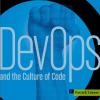agile
 |
Taking Agile to New Heights: Scaling for Success in Aerospace Traditional waterfall development in the aerospace and aviation industries leads to stifled innovation, lengthy cycles, and limited feedback. Agile methodologies, adapted for strict safety regulations, offer a solution. By breaking down development into sprints and fostering collaboration, Scaled Agile can significantly improve efficiency, accelerate ingenuity, and get cutting-edge technologies to market faster—and safer.
|
|
 |
Embracing Agility: Trends to Enhance Your Software Agile software development is constantly evolving to address the challenges of modern software development. This article explores some of the latest trends in agile development, including cloud-based infrastructure, online Scrum, containerization, DevOps, low-code/no-code tools, schema-less data, and serverless computing. These trends can help to make software development more efficient, scalable, and collaborative.
|
|
 |
Continuous Delivery in Agile: Trends and Insights Continuous delivery (CD) and agile development are practices that complement each other well, with CD providing a set of techniques that can help make agile implementations more successful. As continuous delivery practices evolve, several trends have emerged, shaping the future of agile development. These trends assist organizations in improving their software quality and speeding up the delivery process.
|
|
 |
An Agile Approach to Developing a New Software Version Every software typically develops a new version periodically. Creating a new software version is an involved process, and in this article, we will explore how it can be made Agile.
|
|
 |
Using Agile and DevOps to Achieve Quality by Design When software nears completion, it is the wrong time to focus on quality. Product delivery improves if you invest in a plan, validate in small increments, and focus on continuous testing.
|
|
 |
Great Big Agile: An OS for Agile Leaders Following agile ceremonies may make an organization feel good, but that’s only a start. “Great big agile” requires leadership at all levels to focus on self-organization and empowerment as a universal framework.
|
|
 |
Scrum: Back to Basics So you think you know Scrum? Using the whimsical notion of farm animals and light-hearted visuals, take a refreshing review of the entire Scrum lifecycle as an intuitive set of roles, responsibilities, and handoffs. Particular attention is placed on what the ScrumMaster and product owner are expected to do at each handoff.
|
|
 |
DevOps and the Culture of Code Migrating an organization to continuous integration requires adoption new processes, tools, and automation. DevOps relies on dramatic culture change to encourage total transparency and collaboration among all project stakeholders.
|
|
 |
Adapting to Working from Home: A Conversation with Gene Gotimer
Video
Gene Gotimer, principal consultant at Coveros, chats with TechWell community manager Owen Gotimer about the challenges individuals and organizations face while we work from home during this global pandemic and how getting thrown into remote work could shape our future.
|
|
 |
Whole Team Quality: A Conversation with Melissa Benua
Video
Melissa Benua, director of engineering at mParticle, chats with TechWell community manager Owen Gotimer about the importance of whole team quality, how to get started using the test pyramid, and how developers can start writing testable code.
|
|
 |
Containers, Docker, and Kubernetes 101: A Conversation with Ryan Kenney
Video
Ryan Kenney, senior consultant at Coveros, chats with TechWell community manager Owen Gotimer about the difference between containers, container engines, and container orchestration; using containers in your CI/CD pipelines; and the cost of security.
|
|
 |
What Is Scrum?: A Conversation with Ryan Ripley
Video
Ryan Ripley, professional Scrum trainer at Scrum.org, chats with TechWell community manager Owen Gotimer about what Scrum is, some of the most common Scrum antipatterns, and the importance of connecting your Scrum team with your customer. Continue the conversation with Ryan and Owen (@owen) on the TechWell Hub (http://hub.techwell.com/)!
|
|
 |
Become the Person Everyone Wants to Work With
Slideshow
Drawing from her own experiences across twenty years in a range of industry roles, Jaimee Newberry shares true stories of at least a dozen tiny but important things she still sees every day that could make all the difference in how people work with you.
|
Jaimee Newberry
|
 |
Agile and DevOps Transformation in the Telecom Industry
Slideshow
The telecom industry changes rapidly, the competition is fierce, and user experience is the utmost priority. In today's world of digitization and data personalization, effective use of agility and DevOps is the key behind ensuring customer satisfaction.
|
Nilanjana Banerjee
|
 |
AWS Lambda: Best Practices and Common Mistakes
Slideshow
AWS Lambda is a serverless architecture that relieves you of hardware and scaling setup concerns. AWS Lambda functions are used by many organizations for serverless application development and automating DevOps tasks.
|
Derek Ashmore
|
 |
Feature Flagging: Proven Patterns for Control and Observability in Continuous Delivery
Slideshow
Are you moving faster than fast? Congrats! Chances are you already use feature flags to decouple code deployments from feature rollouts.
|
Dave Karow
|
Visit Our Other Communities
CMCrossroads is a TechWell community.
Through conferences, training, consulting, and online resources, TechWell helps you develop and deliver great software every day.
